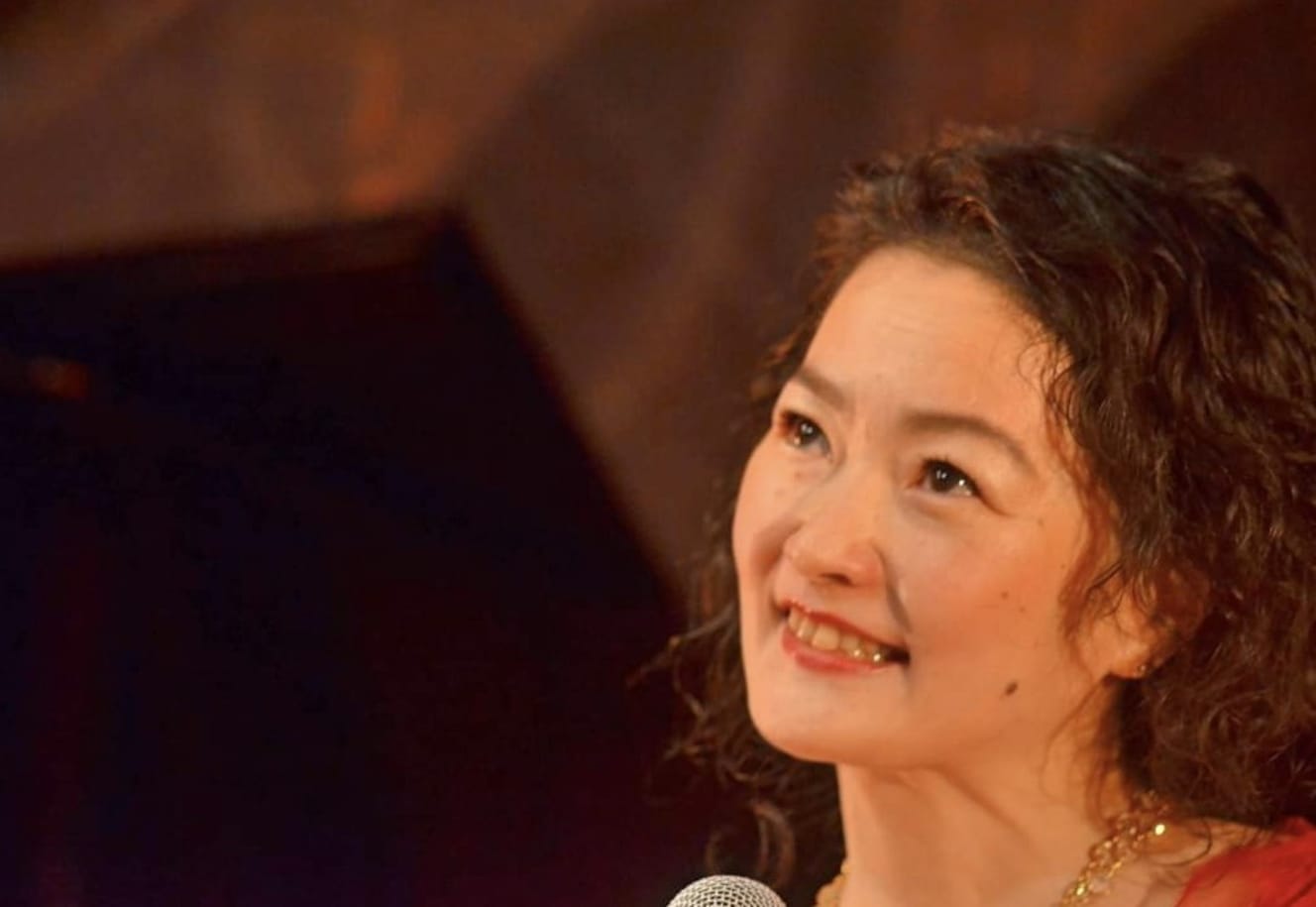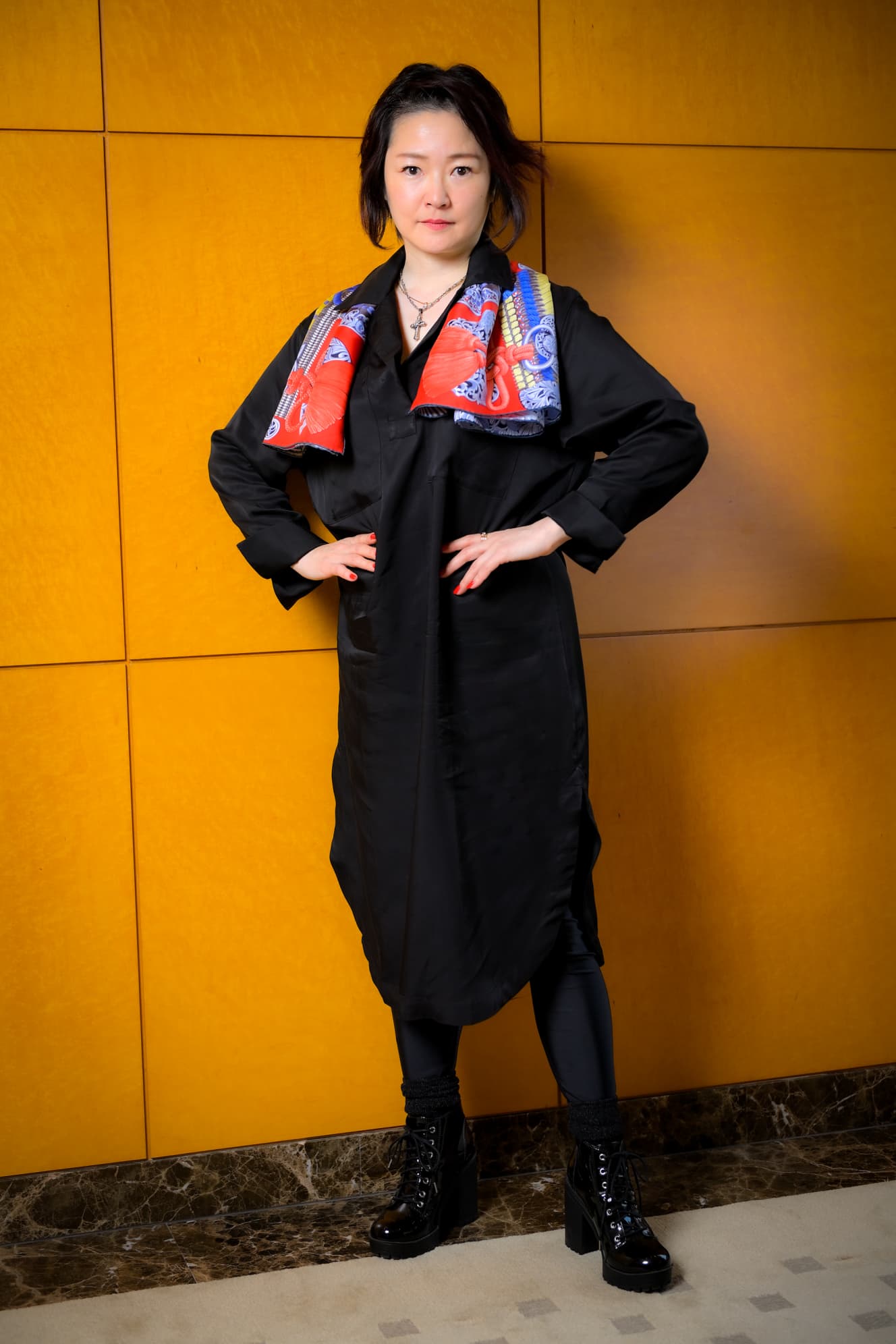The Fierce Life of OG Takarazuka,” who was eagerly requested to perform with Miyuki Nakajima.
Former Takarazuka actress Yoko Ueno looks back on her life. Former Takarazuka actress Yoko Ueno looks back on her life.

Yoko Ueno, who joined the Takarazuka Revue in 1982 and celebrated 40 years of artistic career this year, was blessed with a new job soon after she left Takarazuka, where she had worked for seven years. She also made her debut as an actress.
Four years later, in 1993, she met the singer Miyuki Nakajima. In 1995, she appeared as twins in “Yoru-kai Vol.7 2/2” and since then, she has appeared in four performances of “Yoru-kai”. Since then, she has appeared in four performances of “Yoru-kai. While her second career has been the envy of everyone, she has also faced the struggles that only a woman can face.
She’s already a ‘god.
It had been four years since Ms. Ueno left the Takarazuka Revue, and she was just about to turn 30. The connection with a major figure in the music world came suddenly. Before the performance of “Amadeus,” a stage play in which Ms. Ueno was performing at the time, she was suddenly called into a coffee room by a staff member of Miyuki Nakajima. An interview with people he had never met before. There, he received an offer of a kind he had never heard of.
It’s a job that ends before the first day.
We’ve already recorded the song, so you’ll have to lip-synch.
It was a job called “Understudy. It was a job called “Understudy,” a role of a “shadow warrior” who prepares for the main role on stage as a “substitute” in case the main actor collapses. Yes, it was decided that he would not be able to stand in the performance. But Nakajima’s true intentions were not simply looking for a “shadow warrior” role.
I want to see and feel how my performance (in the evening performance) will look.
Although Ueno had already performed in well-known films such as “Rikyu” and on stage, she gave it her all even though she knew she would not be able to perform on stage.
Mr. Ueno said, “(Mr. Nakajima) was always thinking about how to convey the message of any work and how to make it understood by the audience. I’ve never met another director who would go to the trouble of putting one person in the role of under-study to see how he or she would look on stage, so I was very interested in what Miyuki-san would do.
I still remember the day we first met.
As the rehearsals continued and the performance approached, the staff of “Yoru-kai” began to talk about the two of them, saying, “The way they move and their gestures are so similar. Both the staff and Ms. Nakajima herself said, “There was a time when they mistook a picture of me (Ms. Ueno) on stage for Miyuki. Mr. Nakajima himself said to Mr. Ueno on his radio, “I met an amazing person.
I wasn’t able to ask her directly, but a fan gave me a cassette tape of the event, and I was very happy.
On the day of the final performance of “Night Party” in 1993, the year of her under-study, Ms. Ueno was suddenly invited to the event. When he went to the launch party, Nakajima himself came up to him. He said to me, “Are you free in two years?
“Do you have any openings in your schedule in two years?
What?
Will you join us the year after next?
It was an unexpected offer. It was an unexpected offer. “Yes, I’m available! I’ll do it! Of course I’ll do it! In order to help Mr. Nakajima look at the “Yoru-kai” stage objectively, Mr. Ueno took the role of Mr. Nakajima’s “stand-in” and this opened up an unexpected new path.
Miyuki always respected me as a co-star and an actor, saying, ‘I’m not an actor. Even though Miyuki Nakajima was standing next to me on the same stage, I was able to concentrate on my performance rather than being nervous. In fact, when I got off the stage and went to see a concert, I was so moved by the fact that I was able to perform next to her that I couldn’t stop crying. He’s already a god. And when he’s on stage, he’s like Benten-sama all over again. I would love to work with her again.


From the age of three, she declared, “I’m going to join Takarazuka! from the age of three.
Yoru-kai” Vol. 20 Little Tokyo will not be held again until February 2019. Ms. Ueno is hoping to see her again at the Yoru-kai, but when I interviewed her, there was an atmosphere that made me think that it might be possible. This is because she has achieved everything she has wished for since she was a child.
She was introduced to Takarazuka when she was three years old, and her mother took her there many times; she began ballet and piano lessons at the age of six, and declared, “I will definitely go to Takarazuka. In the third semester of her junior year of high school, she moved to Takarazuka to live with an acquaintance, a three-hour, 45-minute drive from her home, and took lessons to prepare for the entrance exam of a music school.
Her singing teacher, who is now deceased, simply told her, “Your pitch is good, but you can’t do it because you don’t have a voice.
But hard work and dedication do not lie, and she passed the exam at the age of 15.
I think I was lucky. (I had a strong desire to enter Takarazuka. I was the youngest in my class. I was the youngest among my classmates, and they gave me the nickname ‘naive girl.

After graduating with an 8th place finish, Ms. Ueno joined the 68th class of the revue and was assigned to the “Tsuki-gumi” where Mao Daichi and Hitomi Kuroki were at the top. She was second in the troupe at that time, and performed on the same stage many times with Kenko, who later became the top dancer.
When I was a student at the Music School, I was good at dancing, but I was so happy that I was now acting in the Tsuki-gumi. There were many wonderful supporting actors who were also upperclassmen, and I think they awakened my interest in acting.
(Daichi-san is very gorgeous and strict with himself. She was always thinking about what only Mao could do. I was glad that I was in Takarazuka and in the Tsuki-gumi. I was proud of that.
What is it to perform? When she first joined Takarazuka, she played a male role, but she changed to a female role in the middle of her career, and when she started getting interesting roles, she went to small theaters and Kabuki to study the roles. I like the way she looks happy even when she’s on the side,” she said. The voice came from Director Teshigahara. He was a friend of Ms. Ueno’s mother’s, and the feedback he gave her when she came to see the film gave her encouragement.
She began to think, “I want to act, then I have to go out, I want to be an actress. Six months later, she made the decision to leave the Takarazuka stage. She had been with the Takarazuka Revue for seven years. When she was a junior student, she sometimes warmed up the sandals of senior students with a body warmer before their performance during the cold season, but she was happy to play such a role.
I was happy to play such a role. “I can learn while helping the senior students whom I admire. I was so grateful to be in Takarazuka that I really thought that I was the happiest person on earth (laughs).

The only “fate” that I could not find…
The catalyst for her departure from the Takarazuka Revue was an offer to appear in a single scene in the film “Rikyu” (1989) directed by Teshigahara, who came to see her. I thought, “I’ve got to do it. However, Takarazuka belonged to the Hankyu Group, the same group as Toho, and this movie was made by Shochiku. As long as I was still in Takarazuka, I could not appear in the film. At Takarazuka, I had been chosen to be a member of the New York tour, and the president of the Takarazuka Revue at the time consoled me, but I was determined to appear in the film. I left the troupe at the end of March of that year, and a week later I was at a film studio in Kyoto.
It was during this time that she met Rentaro Mikuni, who starred in the movie Rikyu.
I know you really want to quit Takarazuka and become an actress, so there is someone I can introduce you to.”
On the day I went to a hair salon in my neighborhood, my mother called the salon. She said, her voice rising.
She said, her voice rising, “Mr. Mikuni (who took care of me at Rikyu) called me, so call him right away.
This was in the days when there were no cell phones, so he called the number and Mikuni answered. It was a consultation for an interview.
He said, “I’m with Mr. Hitoshi Moni, who I’ve been talking to you about. Can we talk?”
Mr. Moni continued, “Can we meet? Mr. Ueno rushed to the scene. Mikuni introduced Mr. Hitoshi Moni, who was a producer at Shochiku at the time, and made a way for Ms. Ueno to appear on stage, which led to many encounters. Her appearance in the stage production of “Amadeus,” which led to her encounter with Miyuki Nakajima, was not unrelated to Mr. Moni’s presence.
In my work, I have been blessed with good fortune that people envy, but there is only one thing I have not been blessed with.
I found myself at an age where I couldn’t have children anymore…”
She got married at the age of 49 and was never able to have a baby.
When I met my husband, who was six years older than me, we talked about how we didn’t have the option of having children. Around that time, one of my 50-year-old friends got pregnant and had a baby. As I watched her, I had mixed feelings, thinking that I had wanted to have children when I was young.
Now that we don’t have children, we are able to enjoy life together. When I found out that I could not have children, I sometimes wondered if God had not given me children due to the accumulation of events that I secretly wanted to repent.
I have been running as I wanted, but my life has not been “the happiest on earth” in every way. Now, having learned both the sour and sweet sides of life, I have a strong desire to help others, and I have started to work on some activities.

Photography: Kouki Nagahama